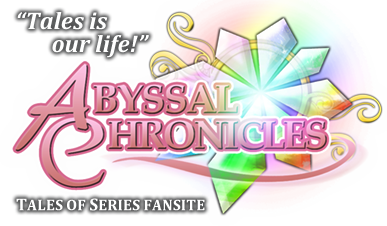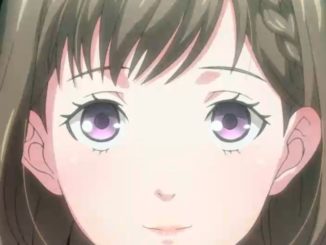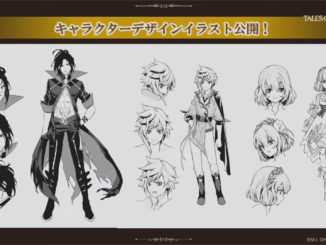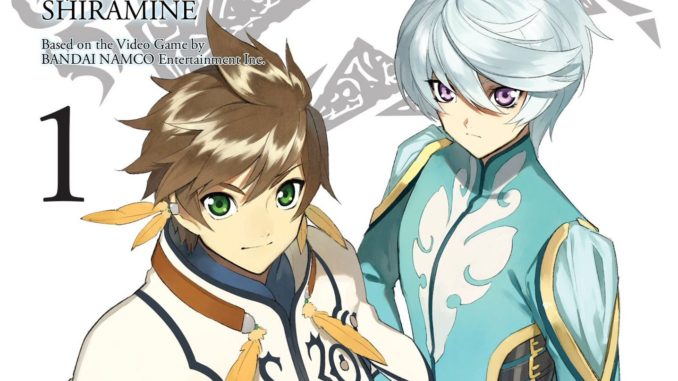
Tales of Zestiria has a game and an anime adaptation. What’s missing? The manga. Who has the manga? I do. Yes, my next big project will be reviewing the Tales of Zestiria manga!
How is the manga compared to the anime and game? Well, for starters, it follows the first portion of the game similarly with some differences, which I will be pointing out below.
The beginning part for example is quite similar. The story starts with Sorey on top of the Mabinogio Ruins being enthusiastic over the ruins as he holds onto the Celestial Record. I think this is the same in all three versions.
Then, as Mikleo shows up, the ruins start collapsing. This is different because the anime and games had lightning and gray clouds that made Sorey and Mikleo anxious; they run, and then the ground collapses. I’m not sure what I like more, but the lack of lightning actually makes sense because Lunarre isn’t at the village, but at the interior of the ruins where he had attacked Alisha. This is how Sorey and Alisha first meet in the manga.
Unlike the game where you had the first instance of a hellion be the spider hellion, the manga’s first fight is with Lunarre. He doesn’t attack the village in this version. Alisha wakes up and tries to help fight with Sorey, but he manages to finish with a Heavenly Torrent. Lunarre runs away after the fight.
Sorey getting scolded by Zenrus is still the same. It’s an important scene, so I’m glad none of it changed drastically.
Sorey and Alisha talk about Ladylake. This is important because Ladylake was never talked about in full detail in the game and anime. Sorey knows it as the city that holds the Sacred Blade. Alisha talks about how it was a city that became blessed. If you played Berseria, there will be an NPC in a sanctuary in Taliesin that talks about Ladylake being an ancient city of water. I believe that after the events of Berseria, the Seraphim and the Shepherd gave their blessing to Hyland and Ladylake for them to be present in Zestiria.
Alisha talks about the calamity in the world below. The Age of Calamity had been going on for twenty years, but Alisha had said it had been a decade since calamity started appearing. Does it mean that the calamity has gotten more severe as ten years passed or is the timeline being inconsistent? Hmm…. Though, now that I think about it, the ambiguous timeframe is actually pretty helpful in regards to Sorey’s age. Decades is somewhere in the 10’s; since Sorey is seventeen, the Age of Chaos in the present Zestiria era most likely started around seventeen to nineteen years ago (Most likely eighteen given how Mikleo was just a baby when Camlann got destroyed).
Anyways, after Alisha invites Sorey to the world below, Sorey starts thinking about it. Unlike the other versions where Sorey contemplates alone, the manga shows him contemplating with Mikleo at his side. Mikleo tells him to think about his choices that won’t break Zenrus’ heart.
Sorey decides to leave with Mikleo. The item that Mikleo gives to Sorey differs in each version. In the game, he gives Sorey Zenrus’ pipe in order for him to sell it just in case he needs money. The pipe is not present in the anime and manga. The anime has Mikleo giving Sorey Alisha’s knife. I believe the game has it so that Mikleo discovers it in the ruin when he and the other villagers go to explore as Sorey stays in the village with Alisha. In the manga, Mikleo gives the glove to Sorey saying that it’s a present from Zenrus. In the game, I believe it was found in a chest in the Mabinogio Ruins. In the anime, Alisha gives it to him.
Honestly, I don’t really have much of an opinion about these small changes, but it’s nice to see what item is given because of how different it is in each adaptation.
The part where Sorey and Mikleo meet the Sparrowfeathers is different. They just go “Hey, what’s up?” to them instead of Sorey meeting them at the outskirts of the city waiting in line for the festival (the game) or Rose being a merchant and wanting money from Sorey after letting him into the city (anime).
Sorey does not faint after forming a pact with Lailah. I actually don’t like it because I think it’s necessary due to how Sorey just became a Shepherd.
The scene at the Round Table at the Royal Palace is different but all three adaptations had the intention of Bartlow wanting Sorey to work for him. The game had Bartlow with a few other council members. The anime is just Bartlow and Sorey at the former’s manor. The manga has the game’s setting just with less people and Alisha actually being there at the beginning rather than intruding towards the end.
Lunarre’s attack on Alisha is due to Bartlow, but they both get stopped by the Scattered Bones. They were about to kill Bartlow, but Alisha tells them to stop. Dezel makes an early appearance with the Scattered Bones; in the game, he was just a gust of wind and doesn’t reveal himself until Rose reveals herself as the Scattered Bones’ leader. He does get an early appearance in the anime at episode 3 in the first season.
Griflet Bridge being broken is the same, but the Ouroboros fight is different. Alisha is present at the fight, but cannot see the hellion or seraphim. The armatus is shown at this fight. After the fight, Alisha becomes a squire because she wants to be like Sorey.
Alisha tags along Sorey and co. on their trip to Rayfalke Spiritcrest, something the game and anime never did. She’s actually pretty helpful in the manga due to squires being able to purify hellions as well. Mikleo starts having his struggles towards the end of Griflet and the start of Rayfalke. It’ll probably happen next volume. Zaveid sees the group from above—something he didn’t do in the game (he was just a sudden appearance at Rayfalke which lead to a fight) but did in the anime (Season 1, Episode 8).
That’s all for the differences. Honestly, I think Shiramine’s adaptation of the first four chapters is great. No one feels too forced or too secluded. Alisha is actually involved a lot without being forced into the story like she was in the anime (though the anime isn’t all that bad). Mikleo and Lailah retain their game personalities and Sorey, although not as cheery and enthusiastic as he was in the game, is still adorable as heck (Yes, I think Sorey is adorable).
The writing stays true to the game, so I liked it a lot. Shiramine’s art is beautiful. She may not be Ufotable, but she draws each character and scene with finesse. Heck, I actually like her Lunarre design more than I do in the game. He looks a bit whimsical in Ufotable style, but looks decently antagonistic in the manga. The only gripe I have is that Mikleo’s hair isn’t blue at the ends. I mean, it should be blue due to his element; it’s probably blue, but she needs to give him a darker shade of aqua for his hair (Perhaps, she just colored him the way Inomata did). Her drawings for Ladylake and the city’s interior are gorgeous and look very similar to the world in the game.
Overall, the first volume is basically the first eighth of the game in drawing form with minor tweaks. It’s not bad, but if you were someone who disliked the anime due to the anime original route, I would recommend the manga due to its faithfulness towards the original media.
Also, before I finish this review, there’s a little Berseria continuity in the manga. Towards the end of chapter 1, the narrator says the date of the Zestiria timeline. In Sorey’s current timeline, the year is 1000 and the calendar is the Glenwood Imperial Calendar. 1000 years is the time span between Berseria and Zestiria. I wonder what Berseria’s old calendar was called.
Also, the omake (bonus chapter) is cute with the way Shiramine gives a nod to the customization mechanic in the game. Sorey in the omake puts on the thick eyebrows with the sideburns. He then asks Alisha to put on the white bunny ears, to which she becomes embarrassed and Sorey wonders why. How did you all customize the characters? For me, I gave everyone minus Sorey sunglasses to make it look like Sorey and his posse. For Sorey, I gave him angel wings that I changed into an orange color due to the feather accessories he had; I wanted the wings to match his earrings.
You can purchase the first volume of Tales of Zestiria: A Time of Guidance at the following shops:
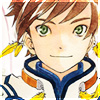 Tales of Zestiria is the Tales of 20th anniversary title and was released in Japan for the PS3 on January 22, 2015 and for the PS4 on July 7, 2016. It was also released in North America and Europe for the PS3, PS4 and PC Digital on October 16 and 20, 2015. The game features Sorey, a young man set out to be the Shepherd. The game is a distant sequel to Tales of Berseria. An anime series by ufotable, called Tales of Zestiria the X is currently airing worldwide.
Tales of Zestiria is the Tales of 20th anniversary title and was released in Japan for the PS3 on January 22, 2015 and for the PS4 on July 7, 2016. It was also released in North America and Europe for the PS3, PS4 and PC Digital on October 16 and 20, 2015. The game features Sorey, a young man set out to be the Shepherd. The game is a distant sequel to Tales of Berseria. An anime series by ufotable, called Tales of Zestiria the X is currently airing worldwide.
